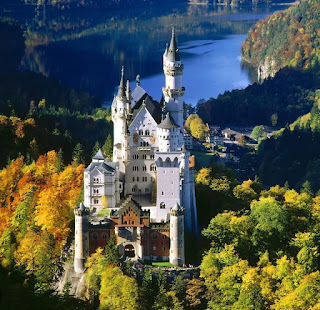“A person should have wings to carry them where their dreams go, but sometimes, a pair of skis makes a good substitute.”
— Hans Gmoser====================================================================
(in the Haute-Savoie department in the Auvergne-Rhône-Alpes region of southeastern France) The municipality of Chamonix-Mont-Blanc, more commonly known as Chamonix, is widely known as the site of the first Winter Olympics in 1924. Located to the north of Mont Blanc, between the peaks of the Aiguilles Rouges and the notable Aiguille du Midi, Chamonix is one of the oldest ski resorts in France.
+ Chamonix is situated at an elevation of 1,037 meters on both sides of the Arve River, which rises in the Mer de Glace (“Sea of Ice”), the largest of Mont Blanc’s glaciers. The peaks of the rugged mountain chain of Brévent and Rouges rise to the northwest above the right bank, while the snow-clad chain that includes Mont Blanc (4,807 meters), the highest mountain in western Europe, towers on the southeast above the left bank. Chamonix is the starting point for the ascent of Mont Blanc. The resort is connected by the highest cable-car system in the world, almost to the summit of Mount Midi; the cable car begins its ascent at 1,036 meters and rises to 3,790 meters). Several other cable cars connect the town to Alpine heights.
+ The Chamonix area is quite popular with skiers and mountain enthusiasts. The valley was first mentioned in 1091, when it was granted by the Count of the Genevois to the great Benedictine house of St. Michel de la Cluse, near Turin, which by the early 13th century had established a priory here.
+ Mountains loom large almost everywhere you look in Chamonix. Skiers and sightseers are launched by cable car to heights of 3,842 meters on the Mont Blanc massif, while the glacial void of La Vallée Blanche, one of Europe's most fêted off-piste adventures, appeals to the brave. Skiers and boarders have a choice of pistes along the valley, while in summer the same lifts access hiking and biking trails.
+ Chamonix has a great history as a winter-sports hub. Rediscovered as a tourist destination by Brits William Windham and Richard Pococke in 1741, Although Chamonix hosted the first ever Winter Olympics, it is now popular for the beauty of the mountains, and a downtown area that hums with life. Streets are lined with Michelin-starred restaurants, sports gear stores and some of the French Alps' more upscale hotels. (Should you discover the town's nightlife, it could exhaust you nearly as much as the mountains.)
+ As the host of the first Winter Olympics, Chamonix will always have its place in the history books. Its main attractions are Mont-Blanc (Western Europe's tallest mountain) and the many ski areas that face the Chamonix Valley. Steep slopes and extreme weather conditions suit advanced skiers best, but there are also runs designed for beginners. Just make sure everyone in your party knows a green circle from a black diamond. (Much of the James Bond movie, The World Is Not Enough, was filmed here.)












